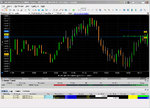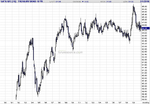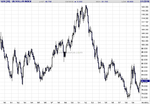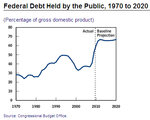15 trades on the chart game
http://www.chartgame.com/trackrecord.cgi?8hgd2b-61,3
Very good results: 50% return with just 3 stocks played. 15 trades is all I could afford, mentally.
I used the usual rules: stoploss of maximum 10% per trade and 10% per stock, trailing stop of about 5%, s/r levels (the usual 4 types of trades: long above s/r, short below s/r). I did keep one trade open a little bit longer than 10% loss and then it came back my way. Other than that i followed the rules: but one mistake could destroy my capital, so I am obviously not ready yet. One trade got away from me, even though it came back. That's when I realized that I can only make about 10 trades at a time, because I am too emotionally exhausted after that. And that in turn tells me that my method is far from being univocally defined: it's still discretionary. It does make money, but I can't fully rely on it, because it only works when I am rested and emotionally balanced.
I also did improve something in that I first looked for opportunities in the weekly chart, and then I went into the daily chart to time the exact entries and exits. I think it's definitely a good thing. But it takes more effort so it increases my accuracy and profit, but it decreases my quantity. So it might actually decrease the profit I can make with one run of trades. With this method, I can make 15 trades on just 3 stocks, but I make less money than by making 15 trades on 15 different stocks. However, this might enable me, eventually, to never have a losing stock.
What matters is that I keep trying, every day, for the coming months, this chart game, so that I finally get used once and for all to the concept of a bracket order: given target and given stoploss. Every trade must be that. Also, I want to get used to the concept of waiting and patience. Support and Resistance have to be reached, overbought/oversold levels have to be achieved when entering... the rules are these essentially, as I said in
earlier posts:
1) Buy above support if oversold (bounce)
2) Buy above resistance if not overbought (breakout)
3) Sell below support if not oversold (breakout)
4) Sell below resistance if overbought (bounce)
Roughly, it could be summarized with this drawing:
View attachment Snap1.bmp
That's the recipe for success: handling the above entries with a stoploss and a trailing stop (slightly better than a simple bracket order).
My real trading should only consists of one trade per day, so those 10 daily trades on the chart game should train me well enough, in terms of emotional balance, to make one trade per day. One trade per day according to this new concept: limited loss (stoploss) and unlimited win (trailing profit). But even a takeprofit would be fine. The point is the stoploss. Until now my real trading has consisted of a limited win (takeprofit) and unlimited loss (no stoploss). No wonder it never worked: the loss paralyzed me. You make efforts to guess it right, you build up hopes, make the trade and then each time you're not ready to see a loss. It finds you unprepared, simply because had you expected a loss you wouldn't have made a trade, so by definition if you make a trade, you're not prepared for a loss, and therefore are not prepared to exit. Actually: the more you prepare a trade, the less you will expect a loss. That's what makes it so hard.
Anyway, here's my objectives for chart game and real trading:
real trading: all profitable weeks
chart game: all profitable 10-trade series












